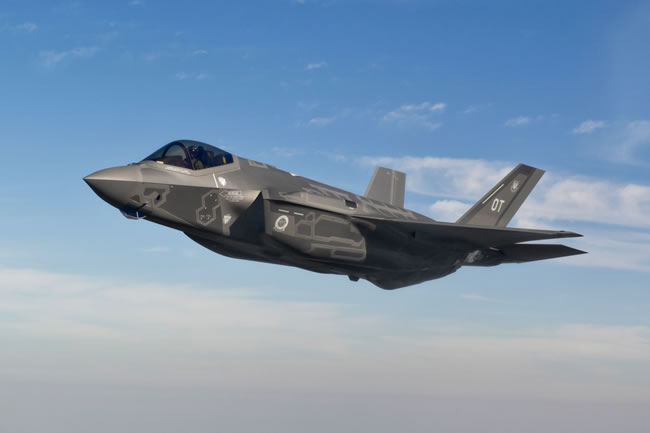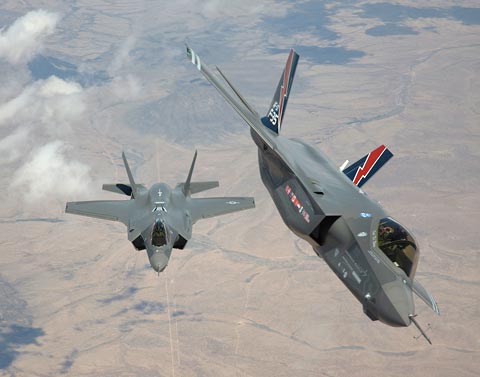
A report prepared by the Government Accountability Office (GAO) in response to the National Defense Authorization Act of 2010 paints an overall positive picture for the F-35 program, despite various reports that took a different view regarding specific deficiencies in testing, training and operability. (The report was publicly released April 17, 2013)
For a program that suffers continuous bad publicity the GAO report is a relief. According to this report overview the F-35 program achieved 7 of 10 key management objectives for 2012 and made substantial progress on one other. Two objectives on aircraft deliveries and a corrective management plan were not met.
The report indicated that the program conducted more developmental flight tests than planned for 2012 and made considerable progress in addressing critical technical risks, such as the helmet-mounted display. With about one-third of development flight testing completed, much testing remains to demonstrate and verify F-35 performance.
Software management practices are improved, but with significant challenges ahead as software integration and testing continue to lag behind plans. Another report, released by the Pentagon test and evaluation comptroller provided a more pessimistic view of the training and operational limitations of the new fighter.
Manufacturing and supply processes are also improving — indicators such as factory throughput, labor efficiency, and quality measures are all positive. While initial F-35 production overran target costs and delivered aircraft late, the latest data shows labor hours decreasing and deliveries accelerating.
The report highlights the fact that the program is working through the continuing effects from its concurrent acquisition strategy that overlapped testing and manufacturing activities. For example, the program is continuing to incur substantial costs for rework to fix deficiencies discovered in testing, but the amount of rework needed on each aircraft is dropping. Nevertheless, retrofits of Low-Rate Initial Production (LRIP) batch F-35 fighters could cost over $1.7 billion over the life of the program. Of that amount, $900 million would be added to the first four batches of jets already built or in production at Lockheed Martin’s. That amount is almost triple the estimate ($373) GAO provided for the additional costs incurred over the same four batches, published in the 2010 report. About $827 million will be incurred over the next six batches.
The reduced cost reflects Lockheed Martin’s cost sharing scheme, under the fifth LRIP contract the company agreed to pay for 55 percent of any cost overruns up to a certain ceiling, and all cost overruns beyond that. Until then, retrofit costs are shared equally by the Pentagon and the contractor.
Going forward, ensuring affordability—the ability to acquire aircraft in quantity and to sustain them over the life cycle—is of paramount concern. With more austere budgets looming this will require a long-term sustained funding commitment. Funding requirements for the F-35 acquisition would average $12.6 billion annually through 2037, reflecting a total U.S. investment of close to $400 billion to develop and procure 2,457 aircraft through 2037. Additional 10.5 billion will be spent annually on sustainment.
In fact, acquisition spending are expected to top that average over the 10 years beginning 2018. That increase results from the surge in acquisition baseline that incorporates the Department of Defense’s (DOD) positive restructuring actions taken since 2010, that provided more time and funding for development and deferred procurement of more than 400 aircraft to future years.
With fifty-two aircraft delivered through 2012, and the restructuring actions the F-35 program is now placed on firmer footing, although aircraft will cost more and deliveries to warfighters will take longer. The program continues to incur financial risk from its plan to procure 289 aircraft for $57.8 billion before completing development flight testing. Meanwhile, the services are spending about $8 billion to extend the life of existing aircraft and to buy new ones to mitigate shortfalls due to F-35 delays.

















